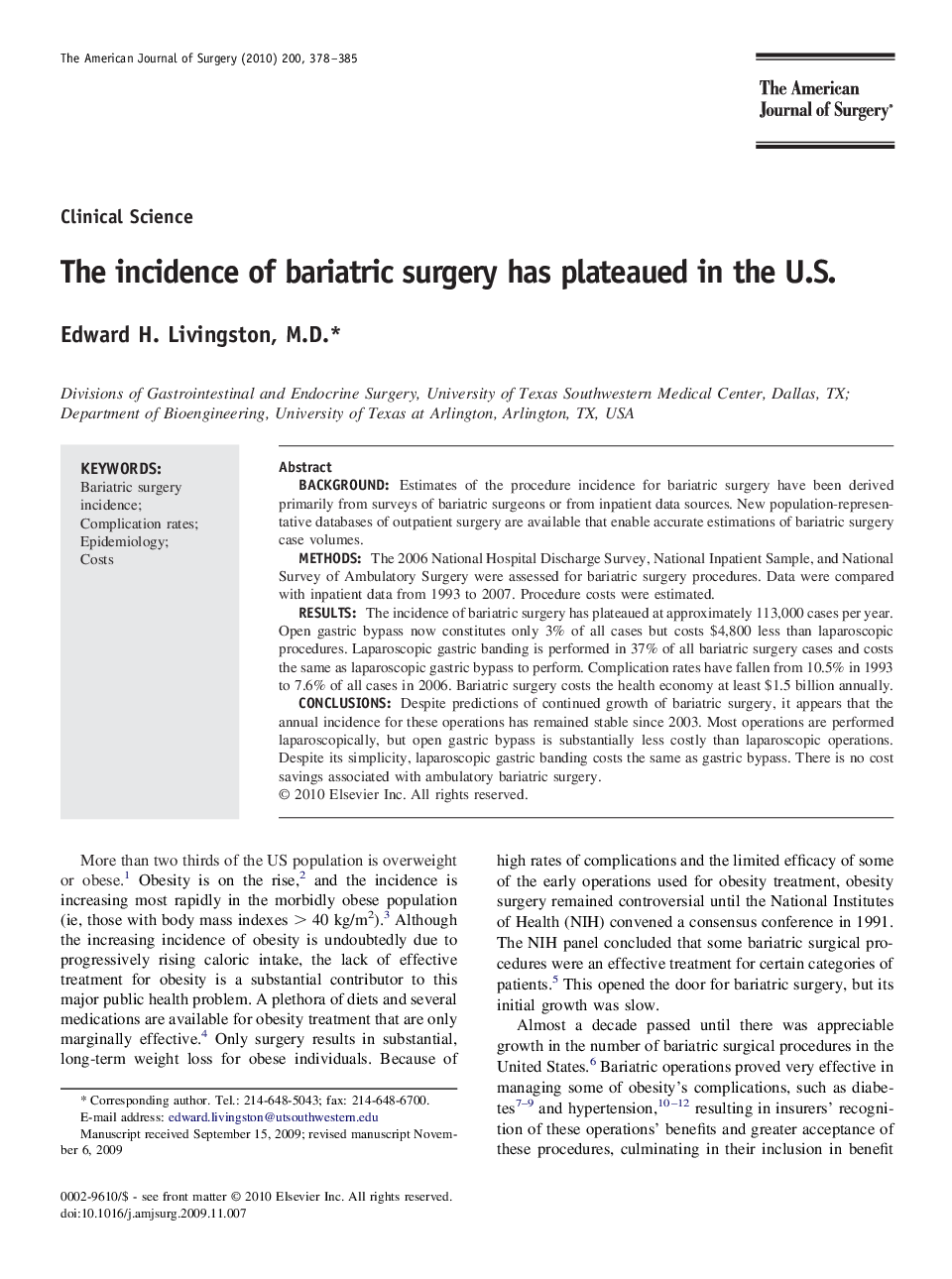| Article ID | Journal | Published Year | Pages | File Type |
|---|---|---|---|---|
| 4280315 | The American Journal of Surgery | 2010 | 8 Pages |
BackgroundEstimates of the procedure incidence for bariatric surgery have been derived primarily from surveys of bariatric surgeons or from inpatient data sources. New population-representative databases of outpatient surgery are available that enable accurate estimations of bariatric surgery case volumes.MethodsThe 2006 National Hospital Discharge Survey, National Inpatient Sample, and National Survey of Ambulatory Surgery were assessed for bariatric surgery procedures. Data were compared with inpatient data from 1993 to 2007. Procedure costs were estimated.ResultsThe incidence of bariatric surgery has plateaued at approximately 113,000 cases per year. Open gastric bypass now constitutes only 3% of all cases but costs $4,800 less than laparoscopic procedures. Laparoscopic gastric banding is performed in 37% of all bariatric surgery cases and costs the same as laparoscopic gastric bypass to perform. Complication rates have fallen from 10.5% in 1993 to 7.6% of all cases in 2006. Bariatric surgery costs the health economy at least $1.5 billion annually.ConclusionsDespite predictions of continued growth of bariatric surgery, it appears that the annual incidence for these operations has remained stable since 2003. Most operations are performed laparoscopically, but open gastric bypass is substantially less costly than laparoscopic operations. Despite its simplicity, laparoscopic gastric banding costs the same as gastric bypass. There is no cost savings associated with ambulatory bariatric surgery.
